They are considered the dark fortresses of Spanish Catholicism but 14 of the country's most famous cathedrals are now UNESCO World Heritage Sites. Visitors learn of the Romanesque, Gothic, Baroque and Islamic influences on their construction. Muslims even prayed in some of the churches.
 For Julio Jimenez Moreda the Cathedral of Seville is a treasure trove. 'This is the largest Gothic altar in Europe,' explains the architecture student from Madrid, who is writing a doctorate on Gothic altarpieces in his country.
For Julio Jimenez Moreda the Cathedral of Seville is a treasure trove. 'This is the largest Gothic altar in Europe,' explains the architecture student from Madrid, who is writing a doctorate on Gothic altarpieces in his country.
'The cathedral is listed as a UNESCO World Heritage Site alongside 13 others in Spain,' says Moreda.
The cathedral was built between 1401 and 1507 on the site of an ancient Muslim mosque which was severely damaged in a 1356 earthquake. Some columns and elements from the mosque were retained in the new structure, most notably the 12th century Giralda, a minaret converted into a bell tower.
The tower is 104.5 metres in height with the first two-thirds consisting of the former minaret and the upper third an achievement of Spanish Renaissance architecture.
When the Moors ruled over most of the Iberian peninsula, Muslims were called to prayer from the tower but today the bell tower rings out for Christian prayer.
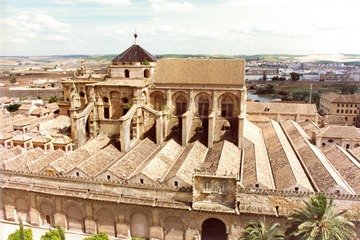 The region's Muslim past is also clearly seen in the Cathedral of Our Lady of the Assumption in the Andalusian city of Cordoba. Locals simply call it 'La Mezquita,' which translates as 'the mosque.'
The region's Muslim past is also clearly seen in the Cathedral of Our Lady of the Assumption in the Andalusian city of Cordoba. Locals simply call it 'La Mezquita,' which translates as 'the mosque.'
Formerly the Great Mosque of Cordoba, the Mezquita was once the largest and most impressive mosque in Europe but became a Catholic church after the Spanish Reconquista with a Gothic cathedral later built in the building's centre.
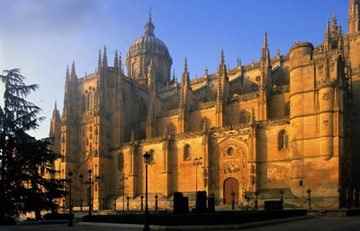 The double cathedral in Salamanca is also of architectural noteworthiness.
The double cathedral in Salamanca is also of architectural noteworthiness.
'The older church was constructed between the 12th and 14th centuries in the Romanesque and Gothic styles while the newer building came into being from 1513 to 1733 with elements of late Gothic, Renaissance and Baroque,' explains Father Francisco.
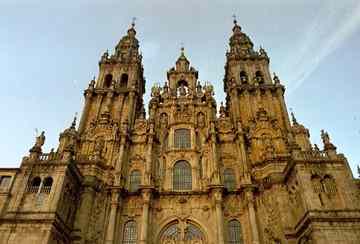 One of Spain's best known churches is Santiago de Compostela Cathedral in the north-west of the country, which is built on the grave of the apostle Saint James the Greater, whose tomb was supposedly rediscovered by the hermit Pelayo in 814 AD.
One of Spain's best known churches is Santiago de Compostela Cathedral in the north-west of the country, which is built on the grave of the apostle Saint James the Greater, whose tomb was supposedly rediscovered by the hermit Pelayo in 814 AD.
Construction on the present cathedral began in the 11th century. The Romanesque south portal dates from this period while the west portal, a masterwork of Romanesque sculpture, was constructed in the 12th century.
Pilgrims on the Camino de Santiago de Compostela, also known in English as The Way of St James, generally make a stop in Jaca, home to one of the most important churches in the Pyrenees.
Construction on the first Spanish cathedral to be built in the French Romanesque style began in 1077 and is home to the silver shrine of Orosia, the patron saint of Jaca who was martyred by the Moors.
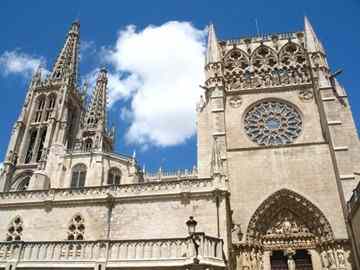 Further west along the Camino, pilgrims also pray at Burgos Cathedral, Spain's first Gothic Cathedral. Built between 1221 and 1280, the cathedral houses the tomb of national hero El Cid.
Further west along the Camino, pilgrims also pray at Burgos Cathedral, Spain's first Gothic Cathedral. Built between 1221 and 1280, the cathedral houses the tomb of national hero El Cid.
Architecture student Moreda places special emphasis on the Cathedral of Saint Mary of Toledo.
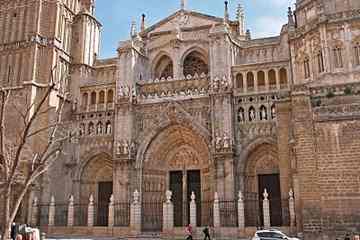 'Construction on the cathedral with its five naves began in the first half of the 13th century following the expulsion of the Moors and is an example of pure Gothic architecture,' says Moreda.
'Construction on the cathedral with its five naves began in the first half of the 13th century following the expulsion of the Moors and is an example of pure Gothic architecture,' says Moreda.
The most important object kept in the Chapel of the Treasure is the great monstrance, which dates from the early 16th century, weighs 160 kilograms and rises to a height of almost three metres.
Toledo was capital of Spain until 1561, until Madrid became the political centre, and the Archdiocese of Toledo retains primacy over the other episcopal sees in the country's Catholic Church.
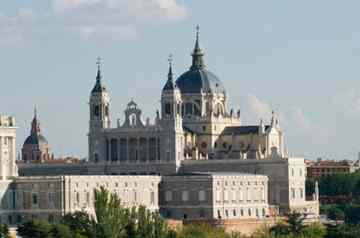 As the new capital had no cathedral, plans were discussed to build a cathedral in Madrid dedicated to the Virgin of Almudena. However, construction did not begin on Almudena Cathedral until 1879 and it was not completed until 1992. It was consecrated the following year by Pope John Paul II.
As the new capital had no cathedral, plans were discussed to build a cathedral in Madrid dedicated to the Virgin of Almudena. However, construction did not begin on Almudena Cathedral until 1879 and it was not completed until 1992. It was consecrated the following year by Pope John Paul II.
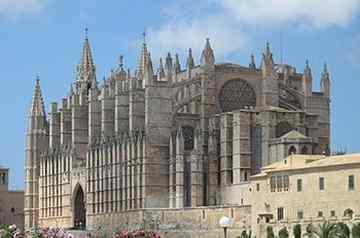 The Cathedral of Santa Maria of Palma is another Gothic church built on the site of a pre-existing Arab mosque. It was begun by King James I of Aragon in 1229 but finished only in 1601.
The Cathedral of Santa Maria of Palma is another Gothic church built on the site of a pre-existing Arab mosque. It was begun by King James I of Aragon in 1229 but finished only in 1601.
Author: Horst Heinz Grimm | Source: M&C [November 01, 2010]